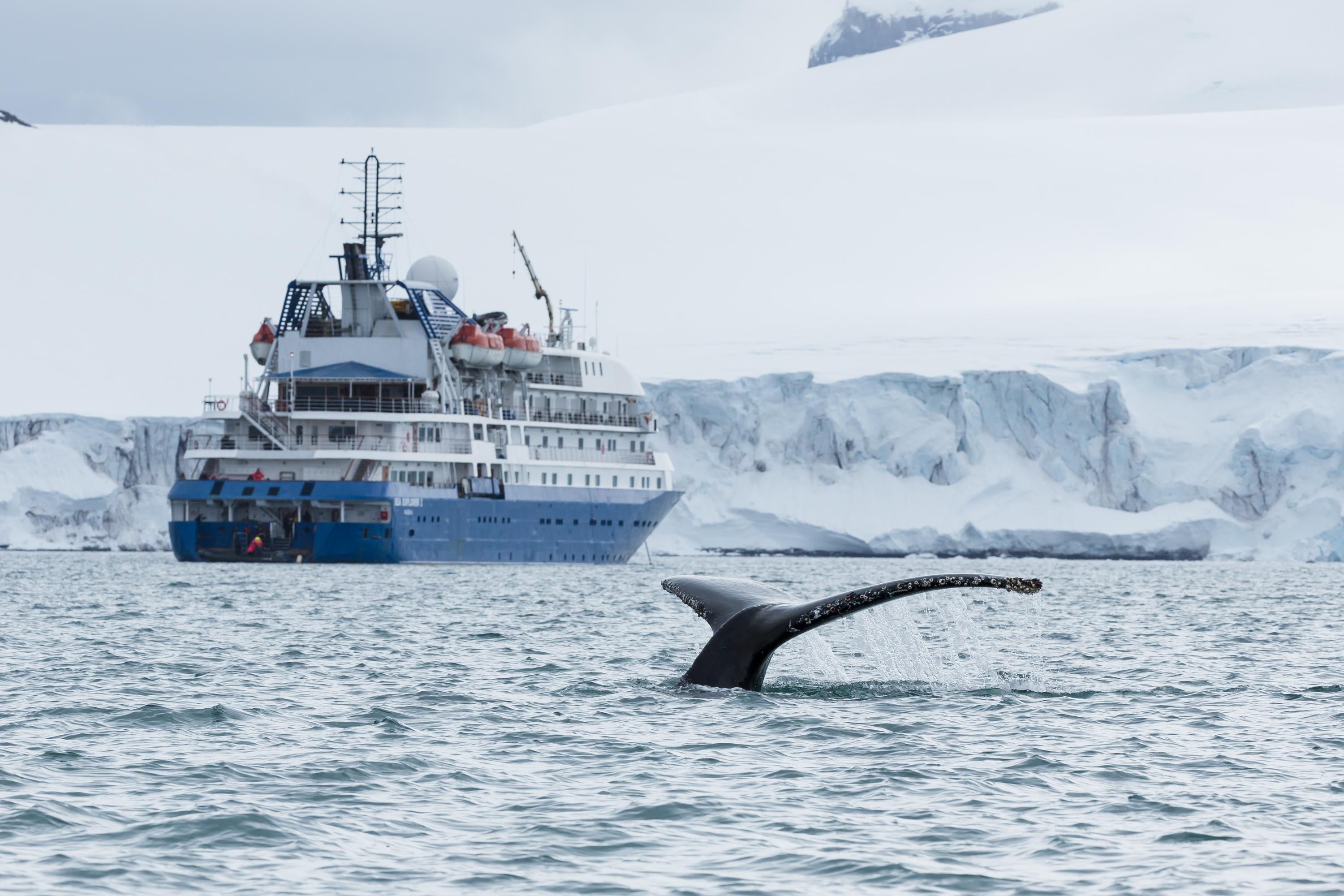Which one is right for you? You’re considering a cruise but aren’t sure where to begin. Are you seeking a mega-ship experience where everything you want to see and do is right at your fingertips? Or, are you seeking a more intimate sailing experience where the focus is all about the destinations? Take a look at the key differences between small-ship and big ocean-ship sailing and find out which appeals to you.
It comes down to this: A small-ship cruise experience is about just that … the experience. Immersion in the destinations, with a focus on having the most authentic visit possible. A big ocean ship is about the ship - the stateroom choices, the dining, the amenities, the entertainment. And, you just happen to be sailing the ocean in a glorious destination. Another way to say it: A small-ship cruise experience is focused outward, honing in on what’s around you. A big ocean ship cruise experience is focused inward, celebrating the fact that you’re basically on a floating resort with all the modern comforts you could want.
Let’s review some key differences between small-ship cruising and mega-ship ocean cruising:
Where You’ll Go
Aboard a small ship, for example, and adventure yacht, the itinerary is often not set in stone. The captain has the expert destination knowledge and ability to cater to the interests of the passengers and the particular nuances of the destination - say, veering off course to see a pod of whales, or switching the order of stops based on the weather.
Aboard a big ship, you’ll do most of your cruising at night and dock in popular ports during the day, according to a fixed schedule.
Where You’ll Stay
Aboard a small ship, you can expect smaller cabins, some with portholes, some with windows and personal balconies. The simplicity of the accommodations is overshadowed by all the great experiences you’ll be having outside the cabins - like wildlife viewing from deck.
Aboard a big ship, you can expect accommodations similar to what you would find in a nice hotel or resort. If you want to upgrade or have a balcony, you’ll undoubtedly pay extra.
Where You’ll Eat
Aboard a small ship, you can expect dining to be an intimate experience with your traveling party or with like-minded guests, so that you may chat about the wonderful adventures you had that day. You’ll typically dine on regional cuisine indicative of your destination.
Aboard a big ship, there are countless dining options - from formal dinners to all-night buffets to fast food. On some cruises, you’ll have assigned seating at a specific hour. Some cruise lines offer more flexibility.
What You’ll Do Onboard
Aboard a small ship, particularly in a place like Antarctica or Alaska, you can expect daily onboard lectures and discussions led by naturalists, historians and regional experts. Local musicians or folk dancers may come aboard one evening. Or, you may simply enjoy sitting on deck, enjoying the scenery as it floats by and enjoying a quiet sunset.
Aboard a big ship, your head will spin with entertainment options for all ages and interests, from waterslides and movie theaters, to Broadway-style shows to arcades and shopping. The amenities and activities are less representative - if at all - about the destination and more about the personality of the cruise line.
What You’ll Do Onshore
Aboard a small ship, your explorations are typically included, usually in much smaller groups that you’ll be part of on the mega ships. Expect wilderness activities, authentic cultural experiences, self-guided (or local-expert-led) biking and walking tours, Zodiac cruising, and more - all in areas of the world not already packed with tourists. Not only are expedition cruises like this found in the Arctic and Antarctica, but in Hawaii, Mexico and Costa Rica, where you may have the opportunity to visit and kayak at under-the-radar secluded beaches.
Aboard a big ship, you’ll stop in the largest ports, likely pay extra for your shore excursions and usually travel by bus with a large group to sightseeing attractions. You’ll either dock at a wharf and walk off the ship or be tendered in a boat with 50 to 100 other guests. If you’re looking for choice - often 100+ shore options for a seven-day sailing - this is the way to go.
Give Me an Example
OK, let’s say your bucket-list destination is Antarctica. How would you like to experience it? Take a look at a Princess Cruise sailing to the White Continent.
Aboard this 16-day Antarctica cruise, you visit four ports in the Falkland Islands, with opportunity for explorations such as visiting a rockhopper penguin colony with a guide and stopping into regional museums. Once you get to Antarctica, your ship will glide slowly past Antarctica’s icebergs, glaciers, mountain peaks and ice shelf. You’ll likely see some wildlife, including seals, penguins and seabirds, all from the comfort of the ship. As you sail past, a knowledgeable onboard lecturer will tell you about what you’re seeing.
And in comparison, the same destinations with Hurtigruten, on a small ship with no more than 200 guests.
You’ll experience three days in the green and grassy Falklands, making landings on New Island, West Point Island, Carcass Island and Saunders Island, and a full day in Port Stanley.
You’ll spend five days in Antarctica. The Captain and Expedition Team will take advantage of the often-ideal conditions to take you ice-cruising, and to come ashore on landings for exciting activities. You may have the chance to kayak the icy waters in the company of whales, hike or even camp on the world´s most isolated continent. While itineraries may change due to weather conditions, landings at Brown Bluff, Hannah Point, Whalers Bay, Danco Island, Orne Harbour, Damoy Point, and Paradise Bay will be attempted.
Still deciding which cruise experience is right for you? I can walk you through the decision process and help distill the differences. Contact me today!

